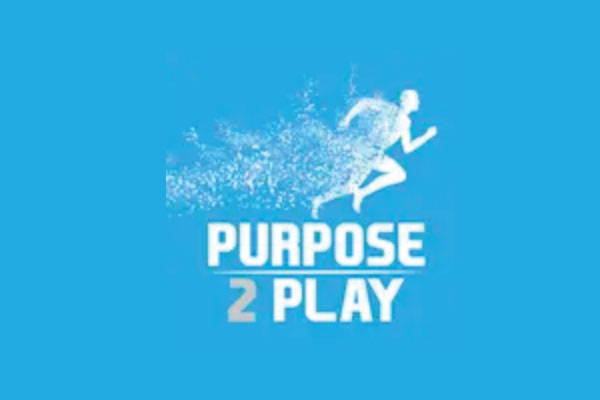
Photo courtesy of Ronny Turiaf
By Kim Constantinesco
One has to wonder if Ronny Turiaf’s heartbeat matches the beat of the basketball that he dribbles.
It’s a fair question for the 30-year-old Minnesota Timberwolves center. Basketball has always been in Turiaf’s blood. However, eight years ago, doctors discovered that the circulation of his blood was at stake thanks to an enlarged aortic root. Turiaf’s heart and basketball career were in serious jeopardy.
Selected out of Gonzaga in the second round (37th overall) of the 2005 draft by the L.A. Lakers, Turiaf went through a routine physical at the request of the Lakers. That’s when doctors saw that with even the slightest spin move toward the basket, Turiaf was a ticking time bomb.
The aorta is the biggest artery in the body and stems from the heart. Each drop of blood that circulates through the body is propelled by the aorta. Turiaf had an aortic root aneurysm, or a breakdown of the artery wall, which is what allowed the aorta to expand.
“During the initial process when I was going through the advanced tests of my heart issue, at no point did I think it was going to be as bad as surgery was required,” Turiaf said. “Basically for about a week, I was doing all that testing and everything was going okay, and then the week after, I had a meeting with the doctor and they gave me two options: They told me I could have surgery and there was a chance that I would be able to play basketball, or I could not play basketball ever again and just take medication for the rest of my life.”
Turiaf was bombed by his options: Live a life on the basketball court assuming the surgery was successful, or live a life away from the sport that breathed life into him.
As a young boy growing up on the eastern Caribbean Island of Martinique (an overseas region of France), Turiaf’s parents separated when he was five-years-old. He bounced around from house to house with his mother before they found a permanent home in the projects when he was nine-years-old.
Looking for a better way of life, Turiaf decided to move to Paris at 14-years-old to attend the National Institute for Physical Education, where he would receive elite level training in basketball.
“I moved to find a better way of life for my family,” Turiaf said.
Turiaf’s training went so well that he made the under-18 national team, and in 2000 he teamed with current NBA stars Tony Parker and Boris Diaw to win the European title.
Turiaf stood out so much in Paris that Gonzaga University took notice and signed him to a four-year scholarship, where he ended his career as the school’s fourth all-time leader in scoring and rebounding.
Turiaf truly left his heart out on the court every time he played. That’s probably why when it came time to make a decision whether to undergo surgery, Turiaf let his heart speak rather than his mind.
Surgeons at Stanford University opened Turiaf’s chest and performed a six-hour operation to repair his aorta. For two of those hours, his heart was stopped.
The surgery was a success, but the struggle was far from over.
“It was hell,” Turiaf said of his rehabilitation. “I wouldn’t wish that on my worst enemy. You go from being a college athlete to being a professional basketball player to not being able to bathe yourself or put socks on yourself. It was very tough mentally, but I was fortunate to be surrounded by my family, and by my second family in the Gonzaga basketball program.”
Post surgery,Turiaf started off walking for five minutes at a time twice per day. He worked his way back relatively quickly, stepping on the basketball court four months after surgery and then playing professional ball five months after the operation. He still wears a chest guard for protection and to put his mind at ease.
The whole ordeal changed Turiaf immensely.
“It enhanced my love of life,” Turiaf said. “It enhanced my appreciation for what I have because I grew up without a silver spoon in my mouth. I had to go get my spoon.”
As excited as Turiaf was when the Lakers signed him to a two-year contract upon drafting him, that feeling was quickly deflated when the team was forced to void his contract after discovering his heart problem.
Lacking the financial resources, late Lakers owner Jerry Buss paid for Turiaf’s operation nonetheless.
Inspired by Buss’s generosity, and the fact that there are people in this world who need heart care yet don’t have the means to get it, Turiaf started the Heart to Heart Foundation. The foundation raises money to provide EKG’s, heart surgeries, and defibrillators to children and school’s in need.
“That’s my baby,” Turiaf said of his foundation. “I told myself, if one day I was financially able to help other people with my means, I would do that.”
Turiaf has figuratively opened his chest once again to extend his heart to those who can’t afford the care that they so desperately need.
So, yes, the heart has reasons that reason cannot understand, but it also has reasons that stand out clear as day. Reason knew that Turiaf’s heart was strong enough to handle it all.
Now we’re all left wondering if it’s the dribbling basketball that matches Turiaf’s heartbeat or vice versa.

